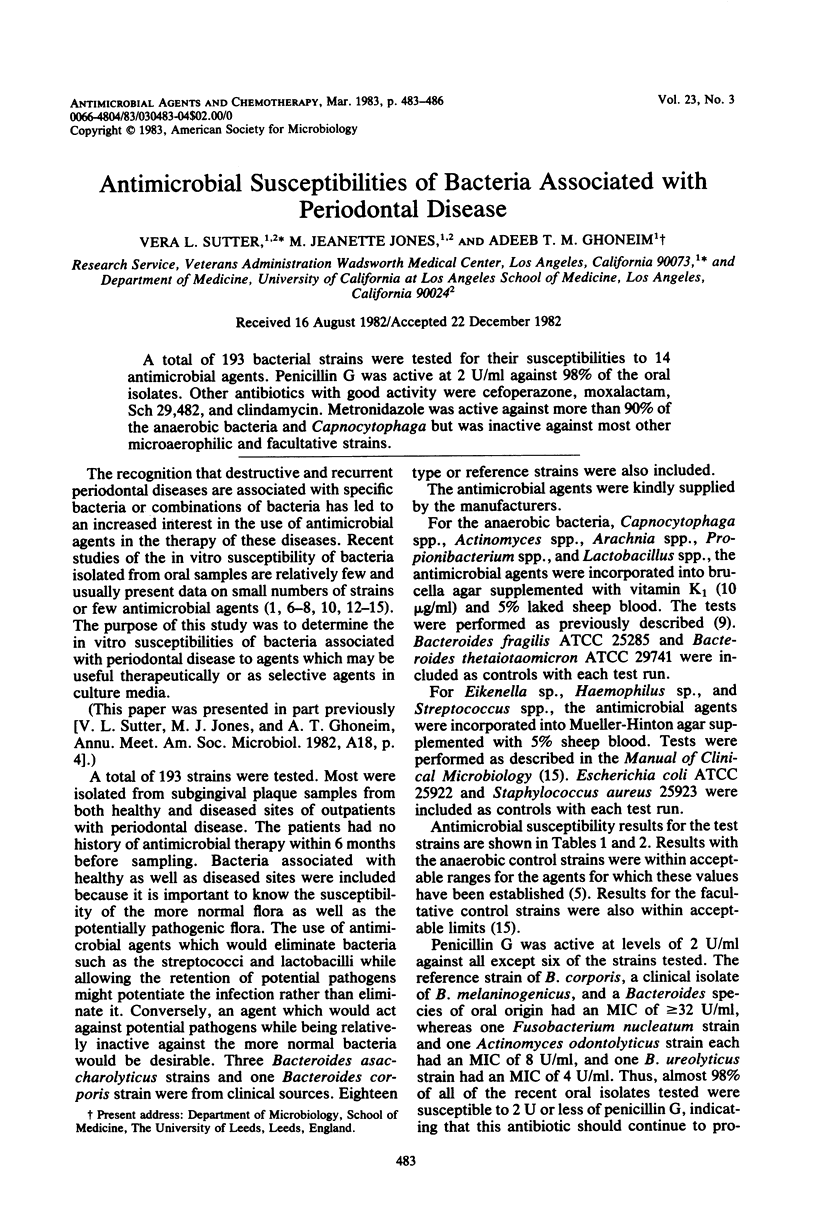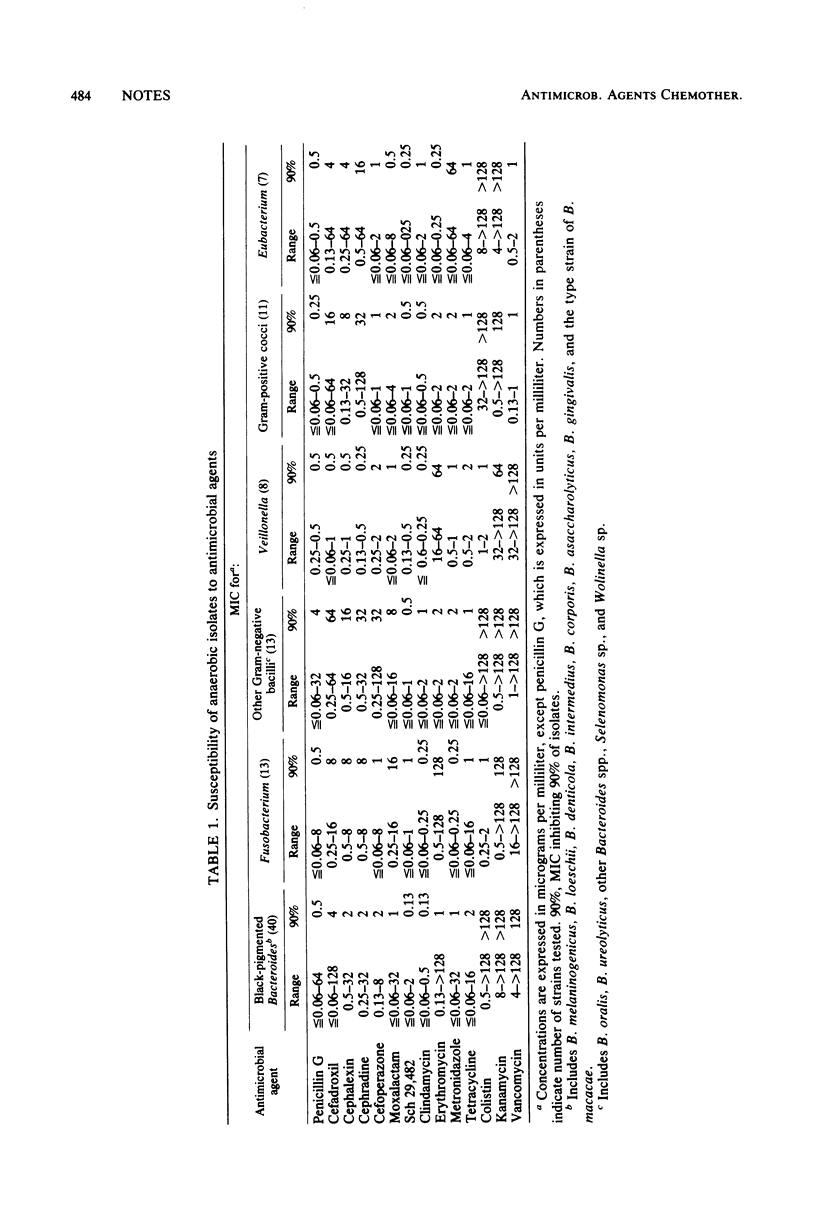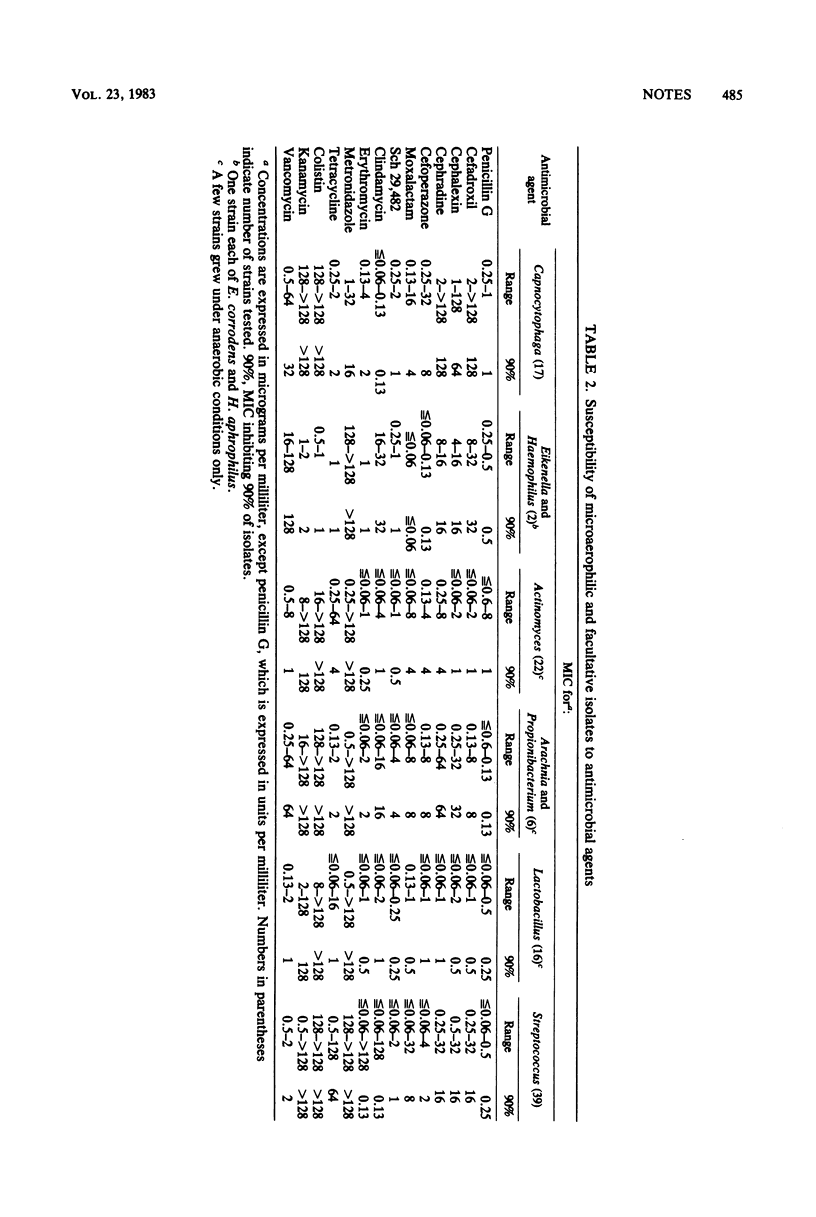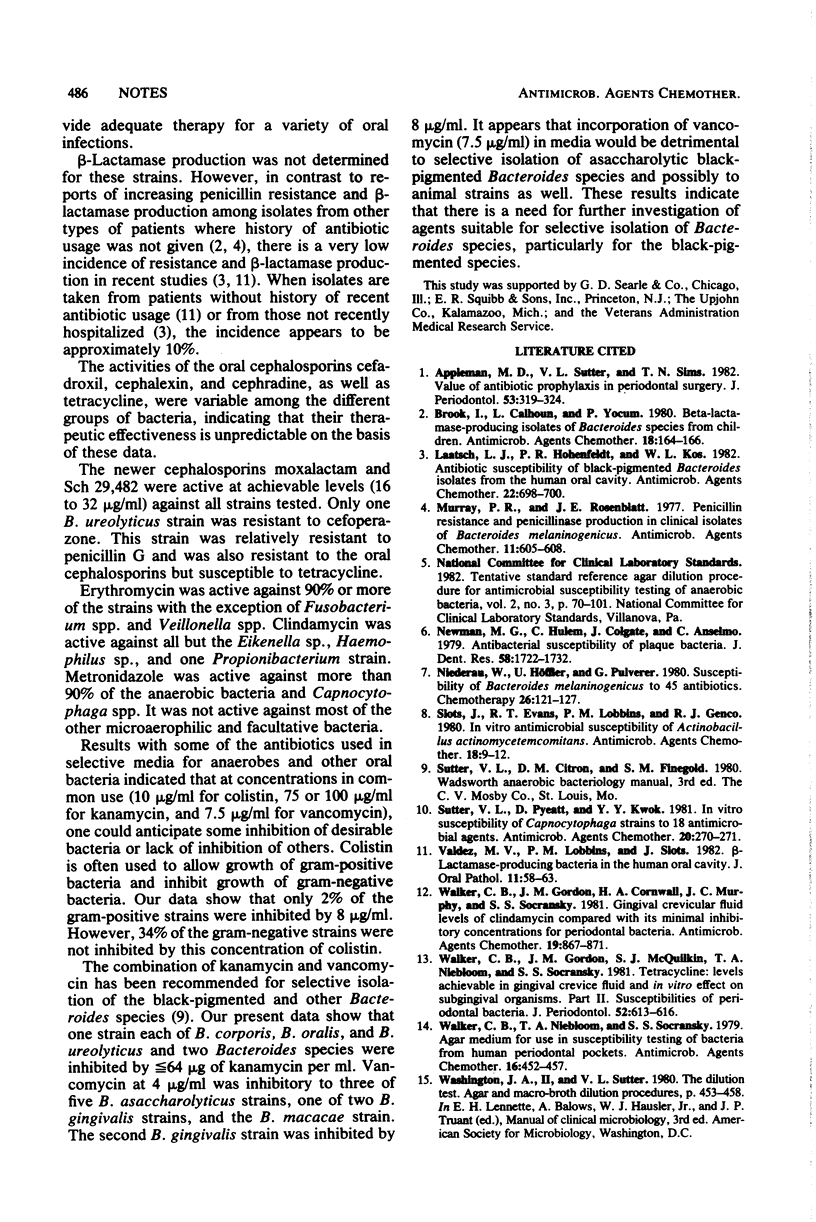Abstract
A total of 193 bacterial strains were tested for their susceptibilities to 14 antimicrobial agents. Penicillin G was active at 2 U/ml against 98% of the oral isolates. Other antibiotics with good activity were cefoperazone, moxalactam, Sch 29,482, and clindamycin. Metronidazole was active against more than 90% of the anaerobic bacteria and Capnocytophaga but was inactive against most other microaerophilic and facultative strains.
Full text
PDF



Selected References
These references are in PubMed. This may not be the complete list of references from this article.
- Appleman M. D., Sutter V. L., Sims T. N. Value of antibiotic prophylaxis in periodontal surgery. J Periodontol. 1982 May;53(5):319–324. doi: 10.1902/jop.1982.53.5.319. [DOI] [PubMed] [Google Scholar]
- Brook I., Calhoun L., Yocum P. Beta-lactamase-producing isolates of Bacteroides species from children. Antimicrob Agents Chemother. 1980 Jul;18(1):164–166. doi: 10.1128/aac.18.1.164. [DOI] [PMC free article] [PubMed] [Google Scholar]
- Laatsch L. J., Hohenfeldt P. R., Kos W. L. Antibiotic susceptibility of black-pigmented Bacteroides isolates from the human oral cavity. Antimicrob Agents Chemother. 1982 Oct;22(4):698–700. doi: 10.1128/aac.22.4.698. [DOI] [PMC free article] [PubMed] [Google Scholar]
- Murray P. R., Rosenblatt J. E. Penicillin resistance and penicillinase production in clinical isolates of Bacteroides melaninogenicus. Antimicrob Agents Chemother. 1977 Apr;11(4):605–608. doi: 10.1128/aac.11.4.605. [DOI] [PMC free article] [PubMed] [Google Scholar]
- Newman M. G., Hulem C., Colgate J., Anselmo C. Antibacterial susceptibility of plaque bacteria. J Dent Res. 1979 Jul;58(7):1722–1732. doi: 10.1177/00220345790580071401. [DOI] [PubMed] [Google Scholar]
- Niederau W., Höffler U., Pulverer G. Susceptibility of Bacteroides melaninogenicus to 45 antibiotics. Chemotherapy. 1980;26(2):121–127. doi: 10.1159/000237893. [DOI] [PubMed] [Google Scholar]
- Slots J., Evans R. T., Lobbins P. M., Genco R. J. In vitro antimicrobial susceptibility of Actinobacillus actinomycetemcomitans. Antimicrob Agents Chemother. 1980 Jul;18(1):9–12. doi: 10.1128/aac.18.1.9. [DOI] [PMC free article] [PubMed] [Google Scholar]
- Sutter V. L., Pyeatt D., Kwok Y. Y. In vitro susceptibility of Capnocytophaga strains to 18 antimicrobial agents. Antimicrob Agents Chemother. 1981 Aug;20(2):270–271. doi: 10.1128/aac.20.2.270. [DOI] [PMC free article] [PubMed] [Google Scholar]
- Valdés M. V., Lobbins P. M., Slots J. Beta-lactamase producing bacteria in the human oral cavity. J Oral Pathol. 1982 Feb;11(1):58–63. doi: 10.1111/j.1600-0714.1982.tb00143.x. [DOI] [PubMed] [Google Scholar]
- Walker C. B., Gordon J. M., Cornwall H. A., Murphy J. C., Socransky S. S. Gingival crevicular fluid levels of clindamycin compared with its minimal inhibitory concentrations for periodontal bacteria. Antimicrob Agents Chemother. 1981 May;19(5):867–871. doi: 10.1128/aac.19.5.867. [DOI] [PMC free article] [PubMed] [Google Scholar]
- Walker C. B., Gordon J. M., McQuilkin S. J., Niebloom T. A., Socransky S. S. Tetracycline: levels of achievable in gingival crevice fluid and in vitro effect on subgingival organisms. Part II. Susceptibilities of periodontal bacteria. J Periodontol. 1981 Oct;52(10):613–616. doi: 10.1902/jop.1981.52.10.613. [DOI] [PubMed] [Google Scholar]
- Walker C. B., Niebloom T. A., Socransky S. S. Agar medium for use in susceptibility testing of bacteria from human periodontal pockets. Antimicrob Agents Chemother. 1979 Oct;16(4):452–457. doi: 10.1128/aac.16.4.452. [DOI] [PMC free article] [PubMed] [Google Scholar]


